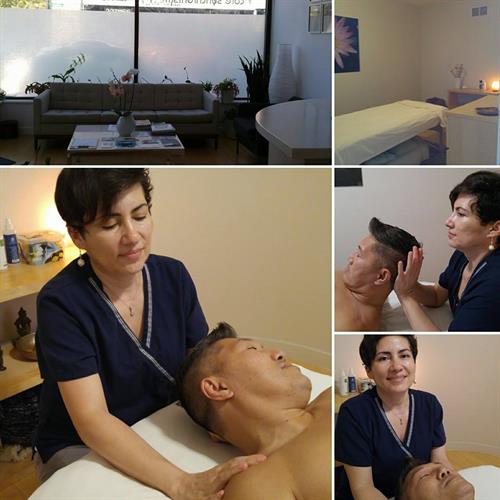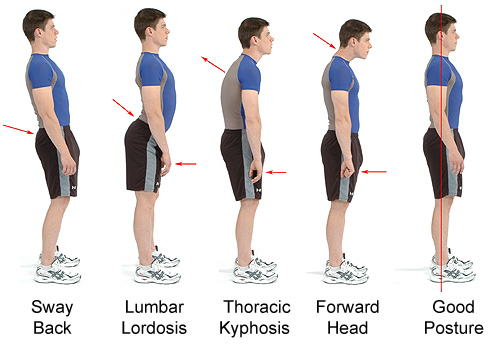When you’ve been in pain for a long time, it’s easy to think there’s no solution. Or to conclude that the only solution is an MRI followed by surgery. In fact most cases of back pain are mechanical or non-organic—meaning they are not caused by serious conditions, such as inflammatory arthritis, infection, fracture or cancer.
The role of back pain and exercise
Back pain is one of the most common causes of someone having to stop their exercise program. Experts estimate that poor posture plays a role in 80% of all back problems. In fact, poor posture and slouching increases the pressure in the vertebrae of the lower back by ten to fifteen times! Increases your risk of injury.
Neuromuscular Therapy (NMT) is effective for many soft tissue pain problems including the back. It’s also quite effective at improving dysfunctional posture and movement patterns that can be perpetuating the problem and the source causing it. That, if uncorrected, can cause eventual degeneration of the joints.
It works well in conjunction with medical and chiropractic care, physical therapy and rehabilitation, pain management, sports activities, and personal training.
NMT primarily addresses one of the main causes of low back pain, lower cross syndrome (LCS). LCS is characterized by alternating patterns of tightness and weakness, indicating long-standing muscle imbalance. Changes in muscular tone create a muscle imbalance, which leads to movement dysfunction. These imbalances and movement dysfunctions may have direct effect on joint surfaces, thus potentially leading to joint degeneration.
How would you know you have these imbalances? A ‘functional’ approach would include an assessment of the entire lower kinetic chain, pelvis and trunk to look for bio-mechanical causes. The aim is to achieve well-compensated function is a realistic ideal and is the principal goal in your treatment.
So many people with hip and back pain have a weak link, the rectus femoris, the 2 jointed quad muscle. I hear things like, “but my quads are strong and well developed”. Yes, they may look great, but how do they function? Your motor control system doesn’t care how you look, only how you function, well or not, in a movement pattern. So even athletes with massive quads can start to develop hip and knee pain from a poorly functioning rectus femoris.
Their hip joints and knees will start to experience discomfort and even become injured. Take ownership of your own body with professional support schedule your appointment today.
Soft Tissue Layers of the Back
Your back is composed of multiple layers of tissue which can be divided into 3 major layers: superficial, intermediate, and deep. These multiple layers, combined with musculature of the abdomen and vast number of tendons and ligaments, form the core of your body.
When under stress, or due to repetitive actions, these cores layers of soft-tissue can become adhesive to each other, These adhesions cause bio-mechanical imbalances which eventually lead to friction, inflammation, and physical dysfunctions
Back pain is caused by broad range of environmental, physical and physiological factors. Although back pain can be caused by several pathological processes, these are rare events. Back pain most commonly originates from mechanical causes such as:
- Repetitive strain injuries
- General lack of core stability.
- Bio-mechanical imbalances.
- Poor conditioning and muscle tone.
- Poor ergonomics.
- Poor posture.
- Trauma.
Repetitive Strain Injuries to the back
What do the following factors have in common?
- Watching television
- Sitting behind a computer for long periods of time
- Poor workstation ergonomics
- Weak and unconditioned muscles.
- Muscle Imbalances
- Excessive weight gain.
- Gait Imbalances such as pro-nation or supination.
- Poor posture while sitting, standing, or performing any action.
- Jobs which require you to perform the same task over and over again.
- Driving for long periods of time
- Standing for long periods of time.
Each one of these actions applies mechanical stress to the body which can then result in repetitive strain injury.
Testimonial
“I am a manager in municipal government, I work out 4 times a week, 30 to 40 minutes each time and chronic low back pain was an issue for me, it was becoming a negative productivity impact for me at home and work.
Mara had a promotional program through my work place. Her holistic approach to massage helped drastically reduce my chronic conditions. The stretching technique is one example of her work that is effective. I am much more balanced both physically and mentally. I would definitely recommend her to chronic low back pain sufferers.” A. Han
Tips to Prevent Back Pain
- Maintain a healthy diet and weight.
- Remain active
- Avoid prolonged inactivity or bed rest.
- Warm up or stretch before exercising or other physical activities, such as gardening.
- Maintain proper posture.
- Wear comfortable, low-heeled shoes.
- Sleep on a mattress of medium firmness to minimize any curve in your spine.
- Lift with your knees, keep the object close to your body, and do not twist when lifting.
- Quit smoking. Smoking impairs blood flow, resulting in oxygen and nutrient deprivation to spinal tissues.
- Work to ensure that your computer workstation is ergonomically correct.
Disclaimer: The information found through out this website is for educational purposes only
[schedule_now]

